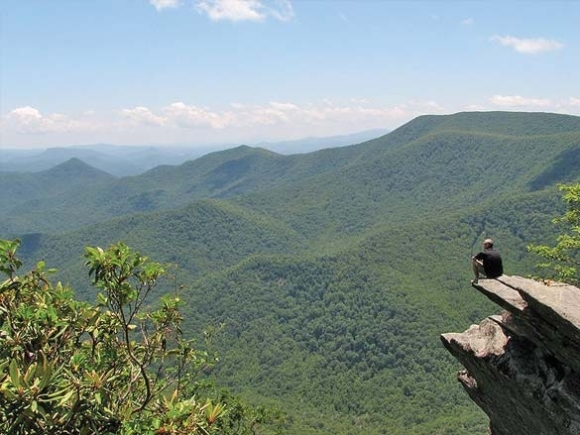High-elevation overlooks are awe-inspiring

High-elevation overlooks are one of our finest natural resources. These vantage points allow us to rise above our everyday humdrum existence and see the world with fresh eyes. Many of the finest overlooks along the Blue Ridge Parkway, in the Great Smokies, and elsewhere can be reached directly via motor vehicles.
Instant access is just fine when we don’t have a lot of time to devote to getting there. But it always adds a bit of resonance to the experience if we have to walk a ways before reaching our destination. It doesn’t have to be a long walk. Many of the most satisfying overlooks require relatively little time or effort to reach.
One of my favorites through the years has been Pickens Nose, which is located in the Nantahala Mountains within Nantahala National Forest. From the backcountry information center at the Standing Indian Campground, continue on FS 67/2 along the headwaters of the Nantahala River. Eight miles from the information center this maintained road passes through Mooney Gap where the Appalachian Trail (marked with white blazes) makes a crossing. Continue another 0.7 mile along FS 67/2 to the trailhead for Pickens Nose, which is situated in a gap at 4,680 feet.
The trail leads south along the crest of a ridge through a rhododendron tunnel. At about a half mile there is a side trail leading a few yards to the east (left) to a small outcrop providing a view out over the Coweeta Creek watershed and the Little Tennessee River Valley to the Balsam Mountain Range. You can spot Highlands in the distance.
At 0.7 miles you reach Pickens Nose at 4,900-feet, a sloping, multi-level granite outcrop on the southwest end of the ridge. It’s maybe 45 feet long and 20 feet wide. The vertical drop of the rock face is 50 or so feet, while the almost sheer descent into the Bettys Creek valley is 2,230 feet.
The views west and north are into the high Nantahalas. Standing Indian looms at 5,499 feet due west. It’s four miles away but seems as if you could reach out and touch it. To the east the Balsams swing back in an arc toward the Smokies. And to the south you will look out over an endless blue expanse of mountains into Georgia and the upper headwaters of the Savannah.
Related Items
Here you are on the edge of the contorted Appalachian drainage system, with waters flowing on the one hand directly to the Atlantic and on the other through the vast heartland of the nation to the Gulf of Mexico.
Why Pickens Nose? In profile the outcrop resembles a huge nose. All the anecdotal “evidence” indicates that it was so-named in honor of General Andrew Pickens of South Carolina, a soldier in the Revolutionary War who subsequently initiated prohibited sales of Cherokee lands during the 1780s and helped lay out Indian boundary lines during the 1790s.
(George Ellison is a naturalist and writer. He can be reached at This email address is being protected from spambots. You need JavaScript enabled to view it..)









